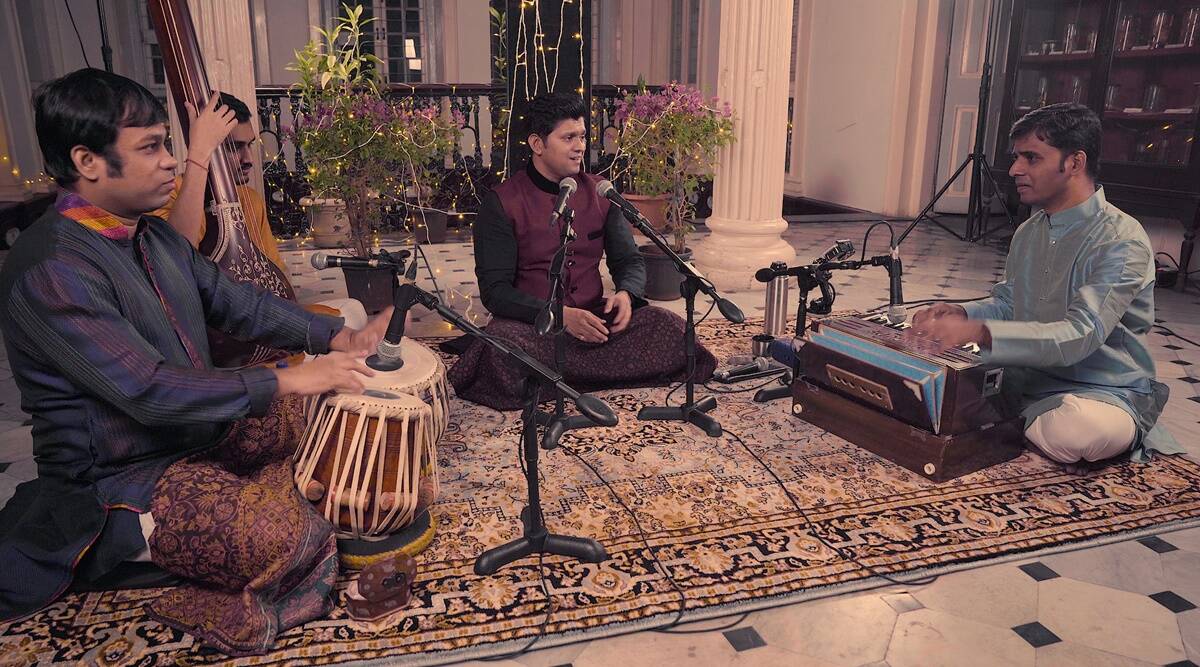jmglov's blog
A blog about stuff but also things.
A blog about stuff but also things.
Before I get into what I'm actually planning to talk about in this post, allow me to make a variety of excuses for my long silence here:
And allow me to invalidate these excuses so that you don't have to:
OK, with all of that out of the way, I'll get onto the main story:
I have a friend from work (and the Clojure community) named Suvrat, and in addition to being a good programmer, he's also a good musician. A couple of months ago, he told me that he'd been a guest musician on this album called KG Westman & Zaعfaran. I gave it a listen, and it is really cool. It's a mix of Indian and Egyptian music, using traditional instruments but modern composition, and the result is this atmospheric, haunting sound that I just can't get enough of (in fact, just talking about it made me want to listen to it, so it's now playing in the background as I write this). I really recommend checking this out. Go on, I'll wait.
Pretty awesome, right? I told you it would be. 😉
So anyway, back to Suvrat. He messaged me a few days ago and told me that he was playing with KG Westman at this cool café / cider (and maybe beer too?) brewery / farm called Rosenhill in nearby Ekerö at their annual Indian evening on August 24th. I told him that I would be there, and as a well-known man of my word (actually, I'm a well-known liar, so that bit about me being a well-known man of my word was a lie–as far as you know, anyway), my wife and I went out there last night.
We had some delicious Indian food (fried tofu with fresh vegetables from the farm and some sort of delicious sauce) with Suvrat and a couple of the musicians, who were kind enough to explain what we were about to hear: Indian classical music. Indian classical music is a rule-based improvisational form built on a melodic framework called a raga and a time measuring system called a tala), and is played by a small ensemble of musicians with melodic and rhythmic instruments.

In our case, the ensemble was two sitars (a stringed instrument with between 18 and 21 strings that somewhat resembles a lute), a santoor (an instrument which has 138 strings and is played on your lap using two small wooden mallets), and Suvrat himself on tabla (a pair of hand drums).
According to Suvrat, this form of music isn't called "classical music" in India, but rather "Shastriya Sangeet" ("scientific music" in English)–in fact, the rules originate from a text written around 2200 years ago called the "Nāṭya Śāstra", which translates into English as "The Science of Performing Arts"–because the rules are based on math, and the players have to occasionally make mathematical computations in their heads as they play. According to Suvrat:
When someone ends one musical sentence, they usually end it with something called a Tihai (pronounced: Ti-haa-ee), and while creating these tihais, you need to compute a few things. And things become more complicated when people "nest" these tihais, tihai in a tihai and so on.
Suvrat described a day of study with his teacher in India as playing for 3-4 hours, then having lunch with the teacher, who would explain little mathematical tricks during lunch that they could use, and then another 3-4 hours of playing music.
The music starts with the melodic instruments introducing the basic theme, which will repeat throughout the performance, and also introducing themselves to each other (since the music is rule-based, anyone can play together without having previously rehearsed together or even met each other). Suvrat described this as a "conversation in the language of music," which at first sounded very abstract, but absolutely made sense when I heard it. Through most of this opening section, which lasted about 15-20 minutes, one musician played at a time for a period of between just a few seconds and tens of seconds, like they were making a point, and then another player would start seamlessly as the first one finished their thought. At times, two players "spoke" at the same time, trading ideas back and forth quickly. And sometimes, they literally laughed at each other, which Suvrat explained to me afterwards was because they were making some silly musical jokes.
After the opening part, the percussion joined in, slowly at first, and then getting up to speed. At this point, all of the musicians were playing at the same time. For me, a first time listener, the music seemed to build organically without me noticing, and then at some point, I felt like I was enveloped in this rich tapestry of sound, which was beautiful as a whole, but was also comprised of many individual glimmering threads that you could follow and appreciate in their own right. I've never had the sensation of being inside a piece of music before, almost as if I was somehow participating in what was going on.
It was a really amazing experience. I can't really describe how the music works—the Wikipedia articles I've been linking have more details–or what it was like to listen to, so I really encourage you to go to a live performance at some point if you can.
Or if you can't, listen to this amazing talk from EuroClojure by Srihari Sriraman called Making machines that make music, in which he uses Clojure to teach a computer how to compose Indian classical music.
Or do both!
PS: Suvrat, if you're reading this, please correct any errors I've made and I'll update the post. 🙂
PPS: Suvrat did in fact read this and suggest some enhancements! And my friend Sajal also read it and dropped me a couple of recommendations for other stuff I might like, based on this post. 💜